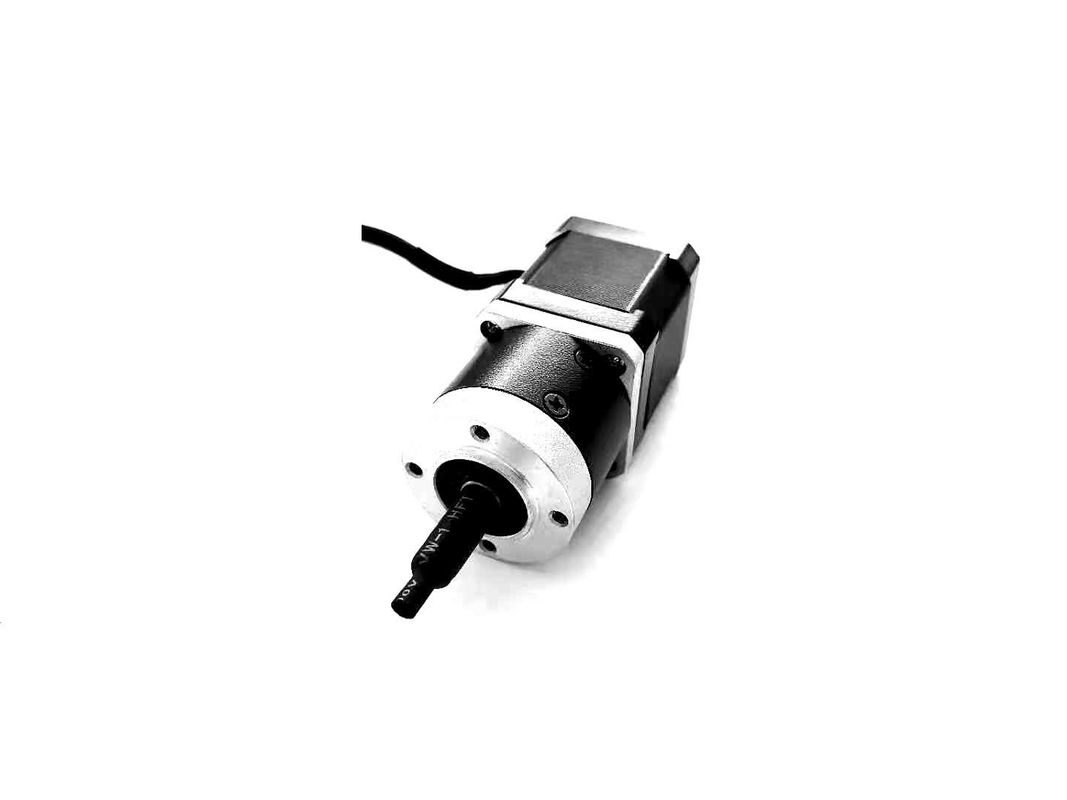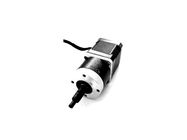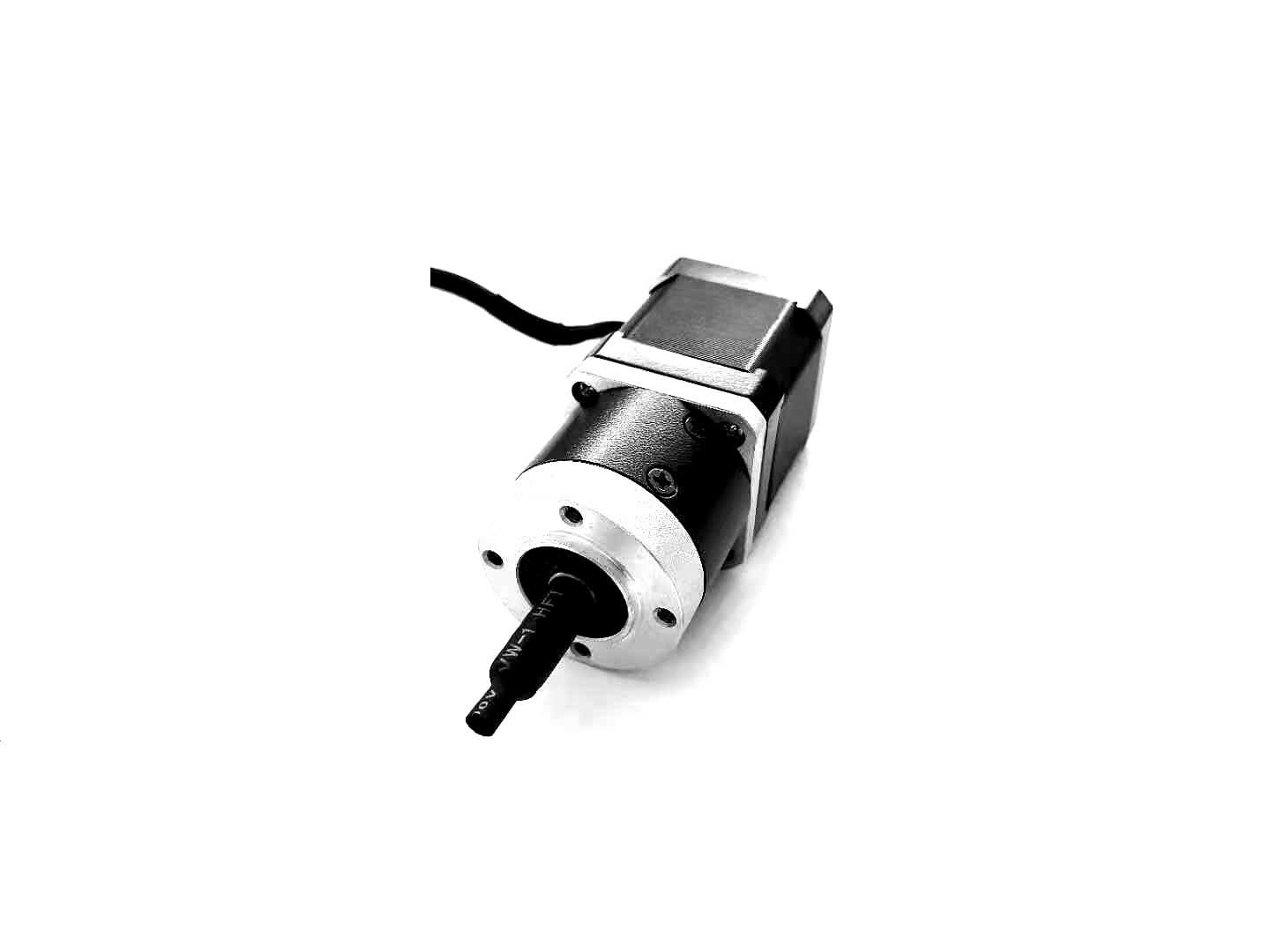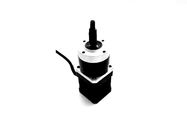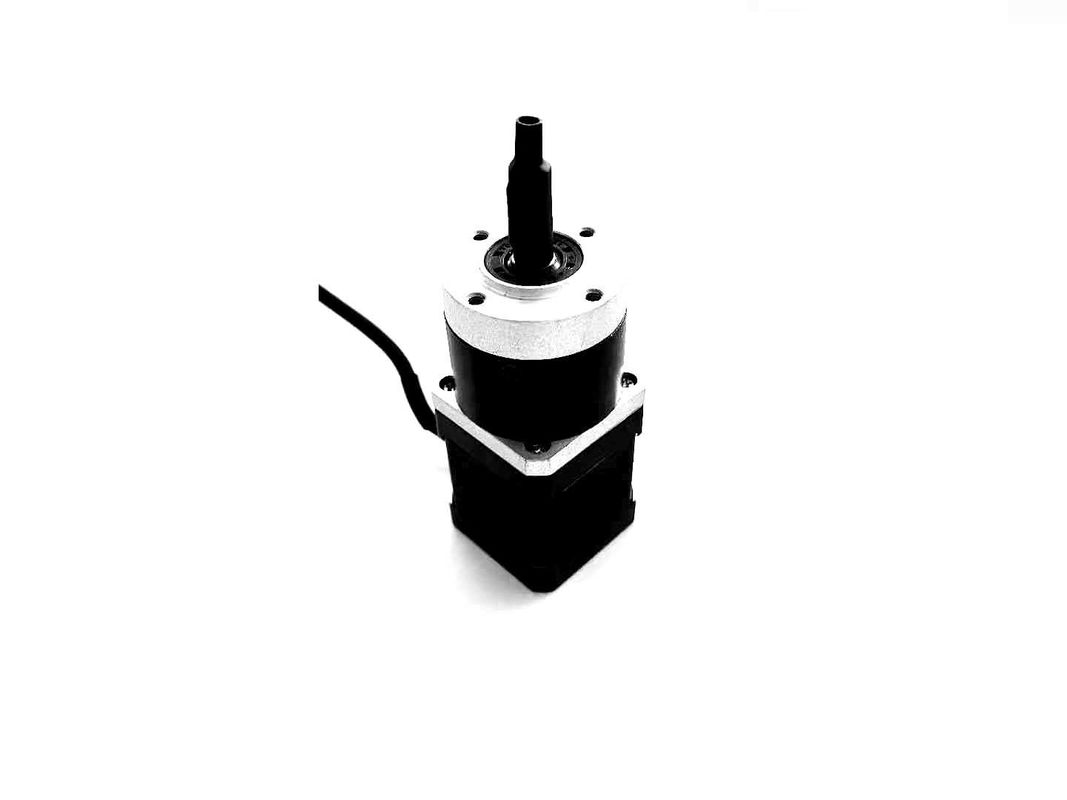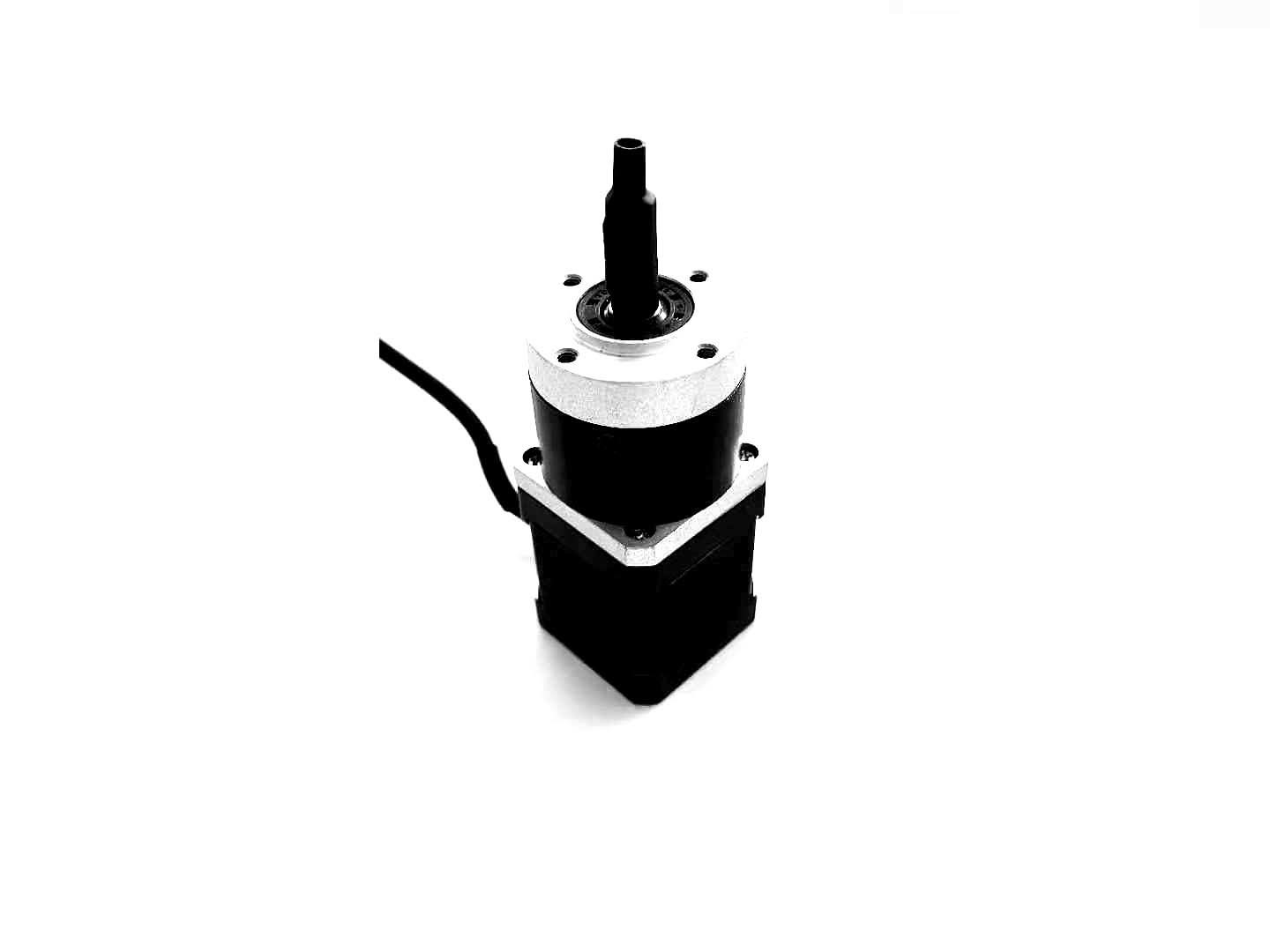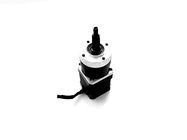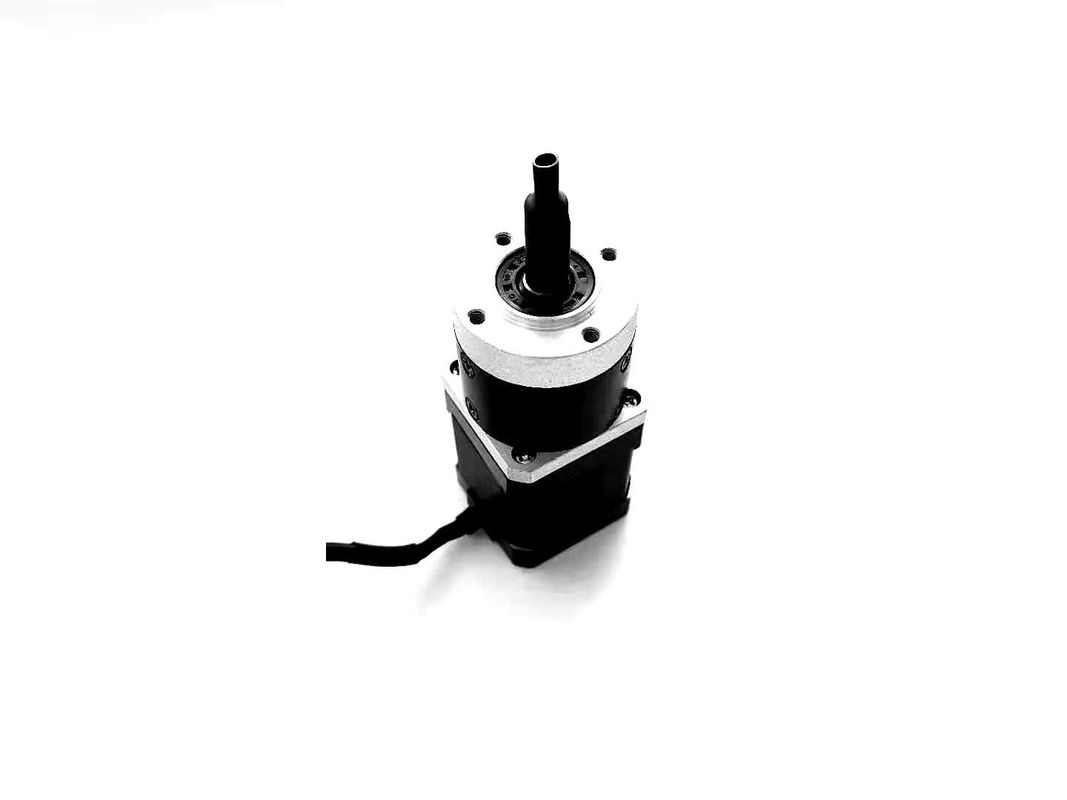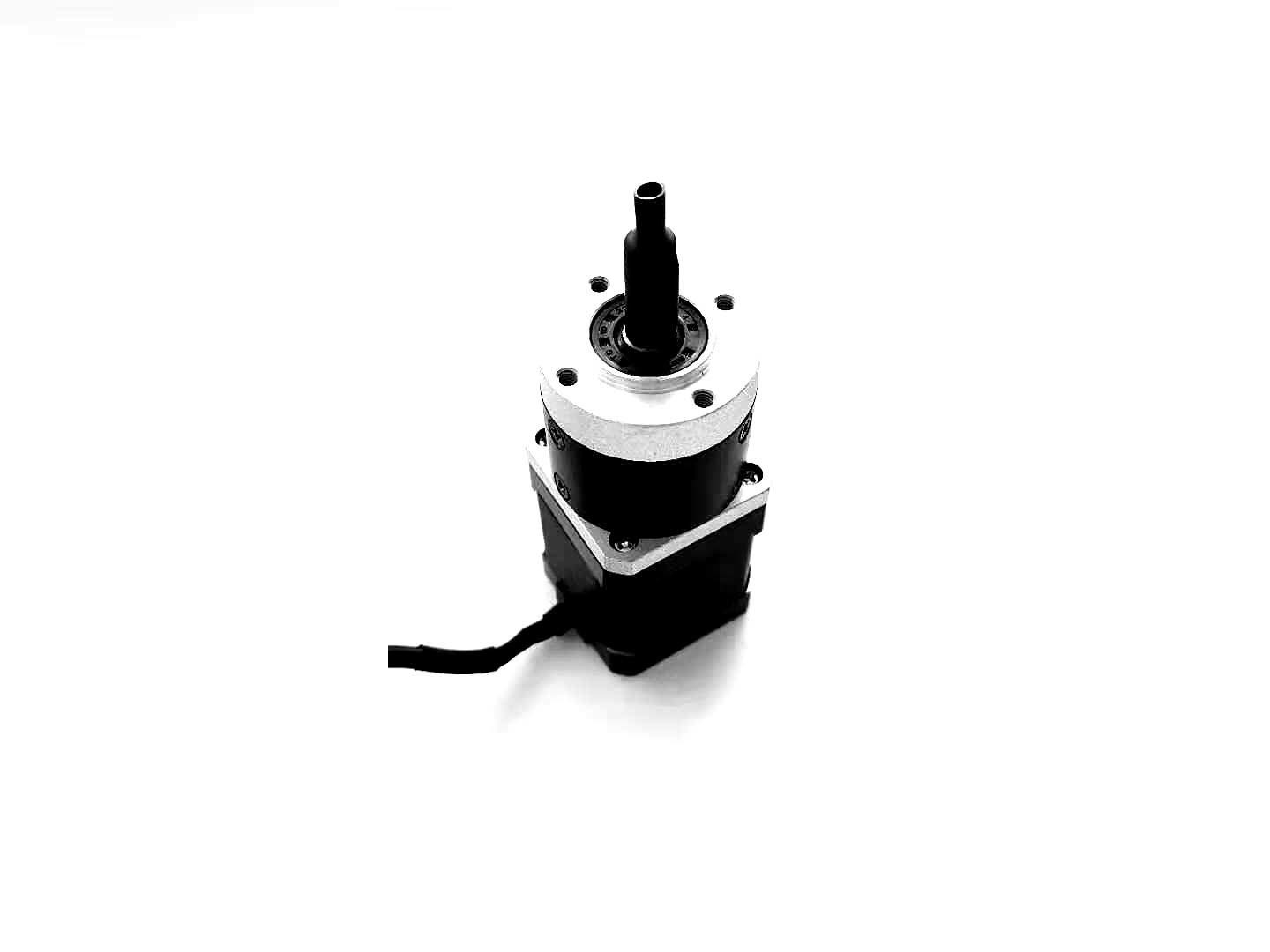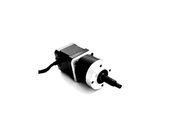42mm 1.8 Degree Gear Box Type Stepping Motor Nema17 Hybrid Stepper Motor
Description of Gear Box Stepper Motor
1. Forward/Reverse Rotation,Pause and Hold
The forward /reverse rotation of the stepping motor can be controlled by the input sequence of the controlled electric pulses.
In the case of the a stepping motor lock(the motor winding is energized,there is no external electric pulse command),the stepping motor can still maintain a certain torque output.
2. Strictly control the production of parts to improve the quality of parts.
3. Accurate Speed Control
The rotational speed of the stepping motor can be precisely controlled ,By controlling the frequency of the electric pulse.
4. Accurate position Control
The angular displacement of the stepping motor can be precise controlled by the number of electrical pulses.Angle accuracy can be controlled within ±0.09°without any feedback devices.
Specifications
| Number of phase |
2 |
| Basic step Angle |
1.8 degree |
| Rated Current |
2.0A |
| Resistance |
0.8ohm |
| Inductance |
3.7mH |
| Holding Torque |
0.72N.m |
| Weight |
0.5kg
|
Gear Box Stepper Motor's Specifications


- Stepping Accuracy: ± 5%
- Resistance Accuracy: ± 10%
- Inductance Accuracy: ± 20%
- Temperature Rise: 80°C Max.
- Ambient Temperature: -20°C ... +50°C
- Insulation Resistance: 100MOhm min. 500V DC
- Withstand: 500V AC, 1 Minute
Working principle of Gear Box Stepper Motor
To make the motor shaft turn, first one electromagnet is given power, which makes the gear’s teeth magnetically attracted to the electromagnet’s teeth. The point when the gear’s teeth are thus aligned to the first electromagnet, they are slightly offset from the next electromagnet. So when the next electromagnet is turned ON and the first is turned OFF, the gear rotates slightly to align with the next one and from there the process is repeated. Each of those slight rotations is called a step, with an integer number of steps making a full rotation. In that way, the motor can be turned by a precise. Stepper motor doesn’t rotate continuously, they rotate in steps. There are 4 coils with a 90o angle between each other fixed on the stator. The stepper motor connections are determined by the way the coils are interconnected. In a stepper motor, the coils are not connected. The motor has a 90o rotation step with the coils being energized in a cyclic order, determining the shaft rotation direction. The working of this motor is shown by operating the switch. The coils are activated in series in 1-sec intervals. The shaft rotates 90o each time the next coil is activated. Its low-speed torque will vary directly with current.
0.9° and 1.8° Hybrid Stepper Motors
1.8° Step Angle,The motors are directly compatible with the stepper motor drive boards and also drive either motor (if required) in the half step mode i.e. 0.9° per step resulting in higher resolution, greater performance stability and faster stepping rates. Direction, velocity, acceleration/deceleration can be controlled by a stepper motor controller.,Applying the correct electrical pulse sequence to the windings of the stepper motor results in a 1.8° step angle rotation of the spindle (i.e. 200 steps per revolution). When correctly loaded and driven these motors will produce discrete output steps. The number of steps and speed of rotation are determined by the number of pulses and frequency of the input signal. This provides an ideal method for speed and position control. The motors are directly compatible with stepper motor drive boards.,
Applications include:
Robotics
Paper feed mechanisms
Teletype printers
Small machine tools
Computer peripherals
X-Y plotters
 Your message must be between 20-3,000 characters!
Your message must be between 20-3,000 characters! Please check your E-mail!
Please check your E-mail!  Your message must be between 20-3,000 characters!
Your message must be between 20-3,000 characters! Please check your E-mail!
Please check your E-mail!
